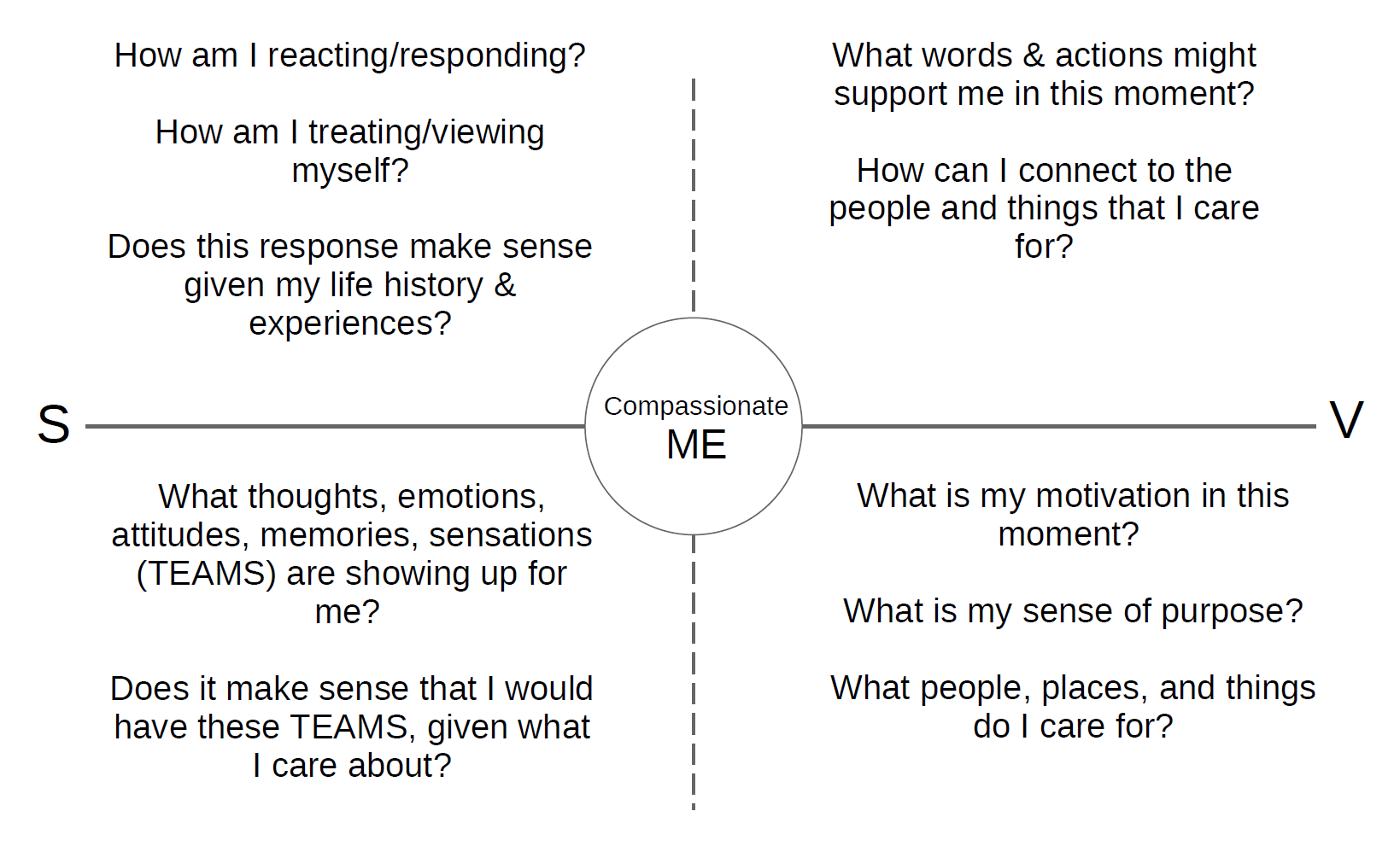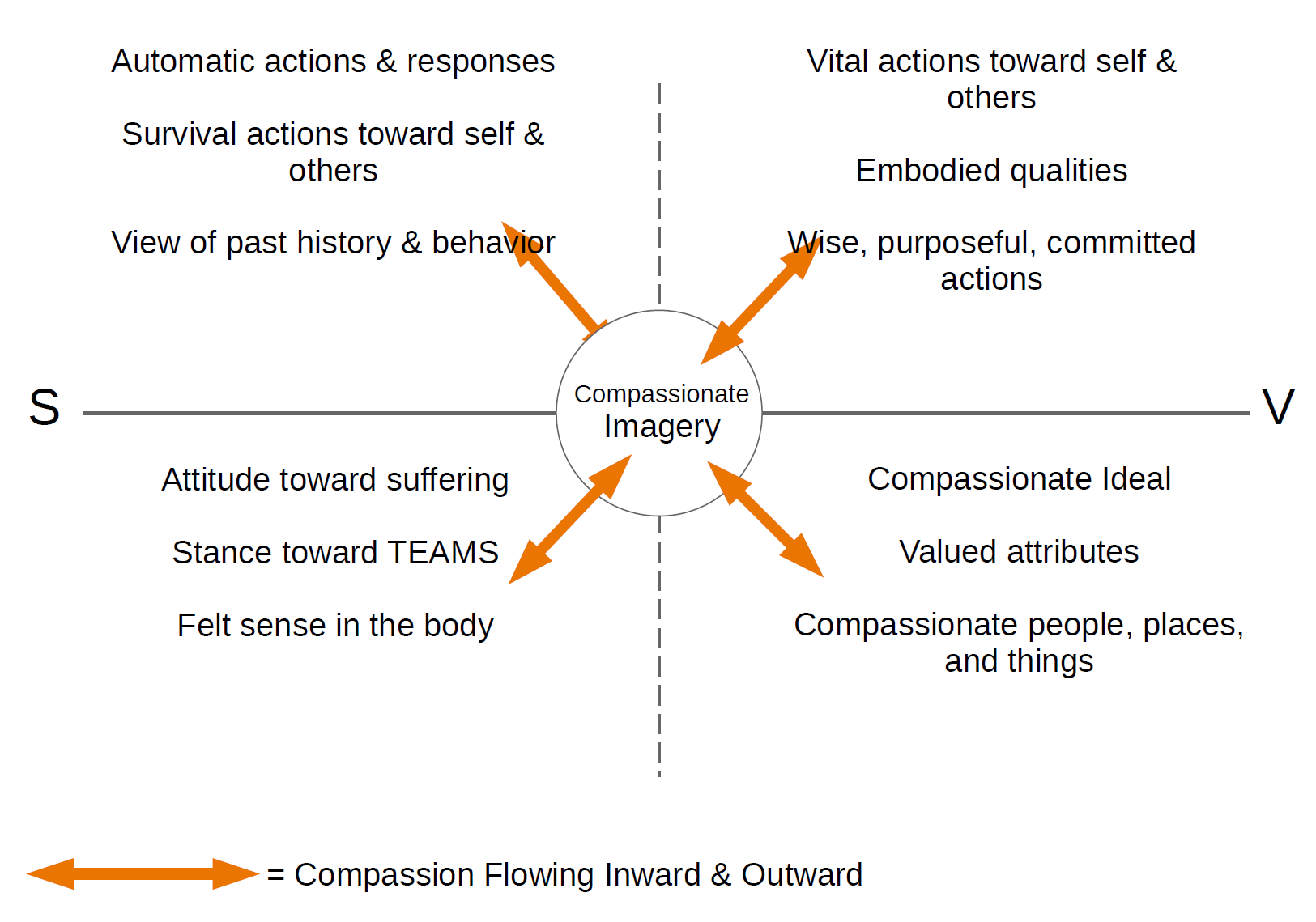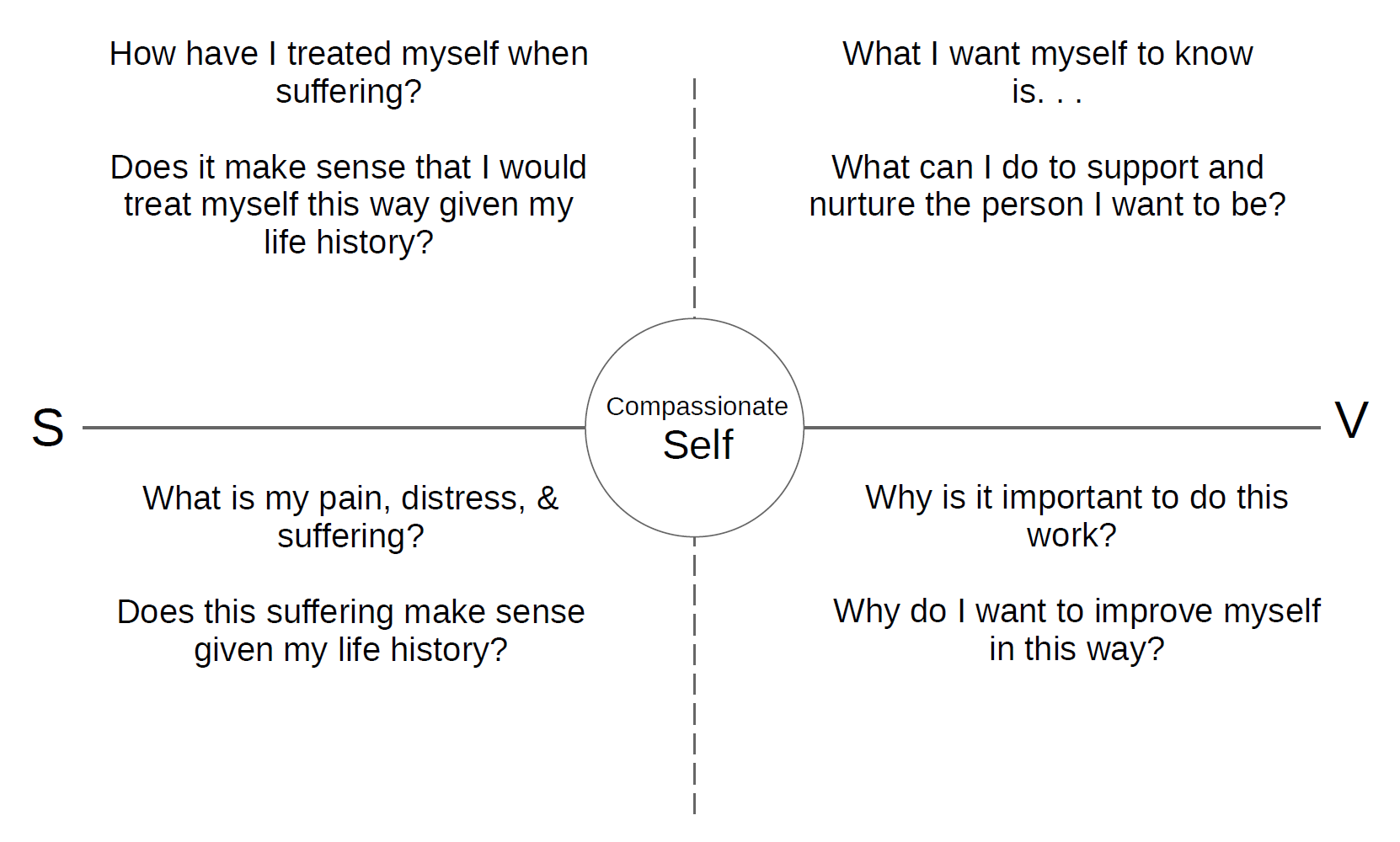The Compassion Focused Therapy Matrix
I’ve continued to work and craft the CFT Matrix and have been putting it into action with clients. The original post has been updated to reflect the latest improvements. I am writing an extended model for using the CFT Matrix and will update this post further as I complete it.
The CFT Matrix
Over the past several months I’ve been diving more into Compassion Focused Therapy and am really loving the model. I realized that CFT could use a matrix of its own to help therapists and clients practice CFT.
The CFT Matrix is based on the Survival—Vital version of the ACT Matrix. You can read a quick guide to the S—V Matrix here.
CFT Matrix Quick Guide
The human mind is a product of our evolutionary history. Like everything else about us, it has been shaped across countless generations to function a certain way. The mind is especially tuned for social connections and relationship formation. Functional relationships are a complex interplay between motivational drives, emotional regulation, and contextual cues.
Our complex mind, while helpful, comes with the innate ability to get in its own way. We have the ability to over-think, under-think, tune in, tune out, distract, avoid, wind ourselves up, and all sorts of other things all at the exact wrong time.
Emotions are particular units of information that provide necessary and useful feedback from our interactions with the world. When it comes to emotions, we have three main systems which serve to regulate each other.
The Threat System is our alert-defend system. It is an ancient emotion system common to all creatures on earth. Animals, plants, and even single-celled organisms have a threat system. Because this system evolved so long ago and is used so regularly it is often the most dominant emotion system. Threat System emotions include, fear, anger, disgust, shame.
In the CFT Matrix, we have a threat line on each side of the horizontal Survival—Vital Line. That's because the Threat System is integral to our survival, but also often activates when we do things that make our lives vital and meaningful.
The Drive System is our engagement-achievement system. This motivates us to strive toward goals, accomplish tasks, and do what we need to do. Drive System emotions include, excitement, envy, desire
The Soothing System is our safety-contentment system. This system helps us care for others and for ourselves. It is associated with feelings of peacefulness, resting, contentment, and compassion.
Not all people are alike. The three emotion systems are supposed to balance and support each other, but our natural variations and life histories (such as how we were raised, traumatic experiences, adverse conditions), can influence how the emotion systems develop and function.
Some people have a highly overdeveloped Threat system, and very underdeveloped Soothing systems. This may have been functional in past situations, but can create turmoil in other contexts. Others have overdeveloped Drive systems, but underdeveloped Threat systems, which can result in high-risk/dangerous behaviors.
Our emotion systems can expand and contract within our lifetime, and indeed moment by moment. It is never too late to strengthen underdeveloped emotion systems. In fact, our emotion systems require consistent maintenance and care just like cars do.
You can think of the three emotion systems as train tracks, or lines of a subway system. Each line will take you to different destinations, but you may need to ride one line for a while before switching over to another line. Switching between the lines is sometimes tricky, but generally doable once you get the hang of it.
So much of life is learning how to ride these emotion system lines, knowing where they're taking you, and understanding when to switch tracks.
The vertical line of the matrix corresponds to our external and internal world. Humans exist in a dual relationship between the external things we encounter and do (events, actions, environment), and the internal stuff that shows up within us like thoughts, feelings, memories, images, and sensations.
Therefore, along each emotion system line, we experience outward and inward effects; and we can respond in both external and internal ways. Ex. If my Threat System is activated, and I am feeling angry, I can punch a hole in the wall (external response), or I can imagine myself punching a hole in the wall while staying visibly “calm” (internal response).
Our ability to navigate this two dimensional system of emotion regulation and response is called Psychological Flexibility. The healthiest, most highly functioning people are ones who exhibit the most flexibility within their responses. Those who are psychologically rigid in their behavioral responses struggle and suffer.
CFT Quadrants
The above framework can be used just like the traditional ACT Matrix.
This can be used to target compassionate imagery & memory practices.
This matrix can be used when working on the compassionate self.
Archived - CFT Quadrants
[The below was written in the early days of the CFT Matrix, before a set of questions for each quadrant was settled.]
As of now the CFT Matrix generally uses the same questions as the the standard ACT Matrix and the S—V Matrix which works because both models are rooted in evolutionary psychology, but I imagine that over time I will hone down some more true-to-CFT questions for each of the quadrants.
Here are some of the questions that I’ve been playing around with. Some of these are for assessment purposes:
Lower Right Quadrant:
“Who & what are important to me?”
“What in life motivates me?” / “In this moment what do I find motivating?”
“What do I (hope to) strive for in life?”
“If I could dedicate my life to something, what would that be?”
“I often find it easy to engage with what matters to me. Y / N”
Lower Left Quadrant:
“What inner stuff shows up that is hard to hold on to?”
“What are some of the survival instincts/emotions/etc. that show up for me on a regular basis?”
“What inner stuff shows up that can get in the way of what matters to me?”
“I find it easy to provide compassion towards myself. Y / N”
“I regularly treat myself as I would a dear friend, or as a loving caregiver would treat their child. Y / N”
“I believe I don’t deserve to give compassion to myself. Y / N”
“Giving myself compassion might be helpful for me / might hinder me.”
“When comforting or soothing myself it often feels inauthentic or not genuine. Y / N”
“What comes to mind as I imagine a compassionate figure? Person you know? Person from history? Fictional character? Human/animal/incorporeal presence?”
“How would I like to relate to my ideal compassionate image? What would help me sense their commitment and kindness toward me?”
Upper Left Quadrant:
“How do I typically respond when this inner stuff shows up?”
“How do I treat myself after this inner stuff shows up?”
“How do I care for/comfort/soothe myself when this inner stuff shows up?”
“My own difficult experiences make me feel more connected / less connected to others.”
“Given my life history, it makes sense that I would respond this way. Y / N”
Upper Right Quadrant:
“What actions can I take that would move me toward a sense of vitality?”
“What words & actions could I give myself in this moment?”
“What actions could I be proud of here?”
“What actions might give me a sense of purpose and meaning?”



